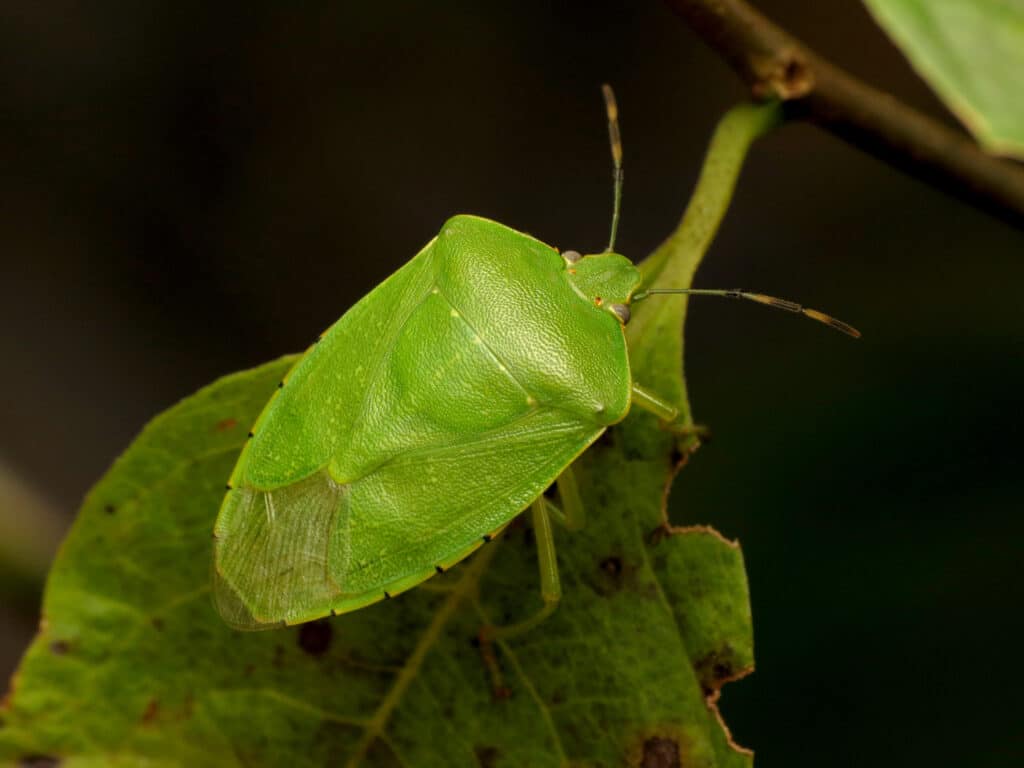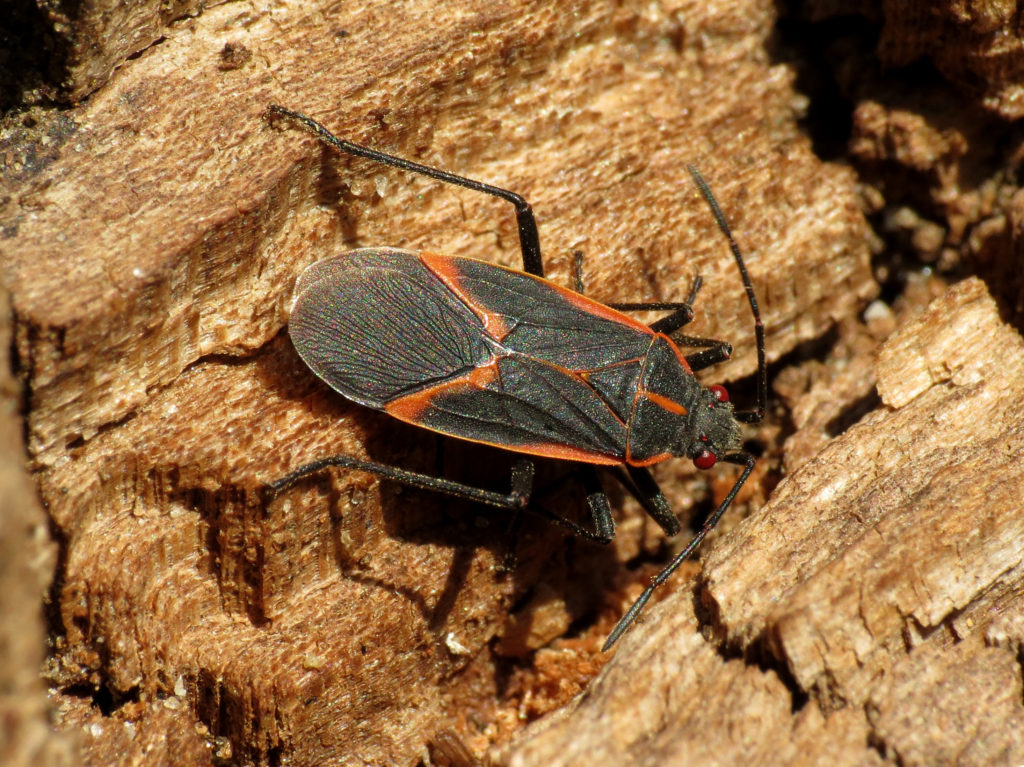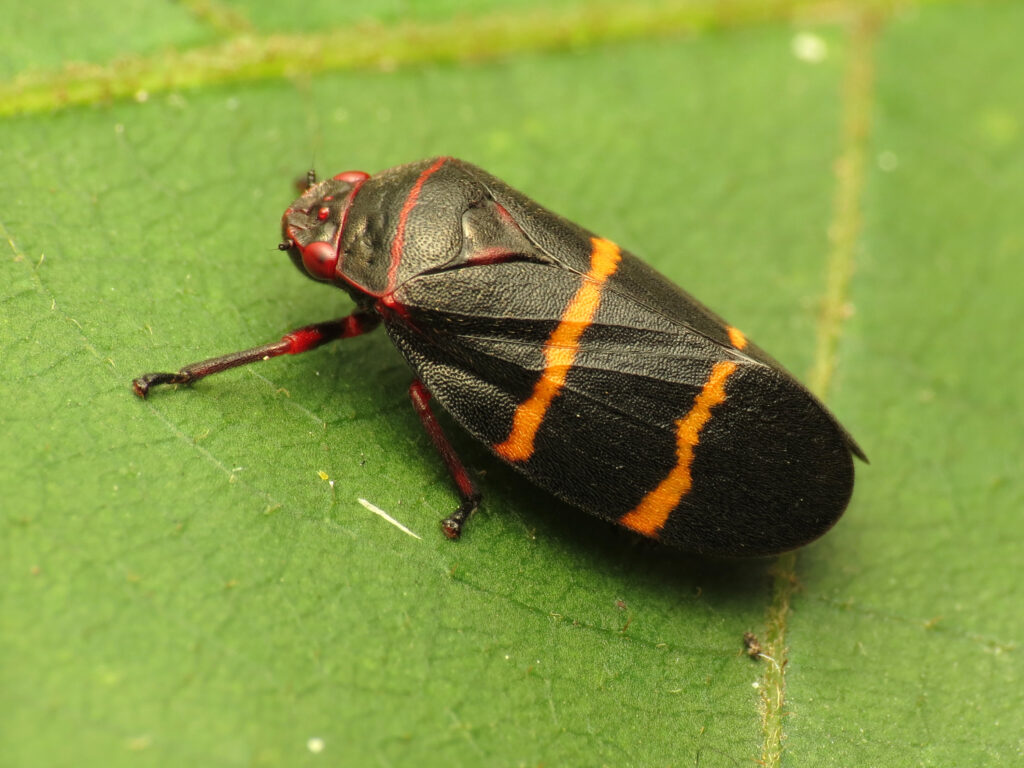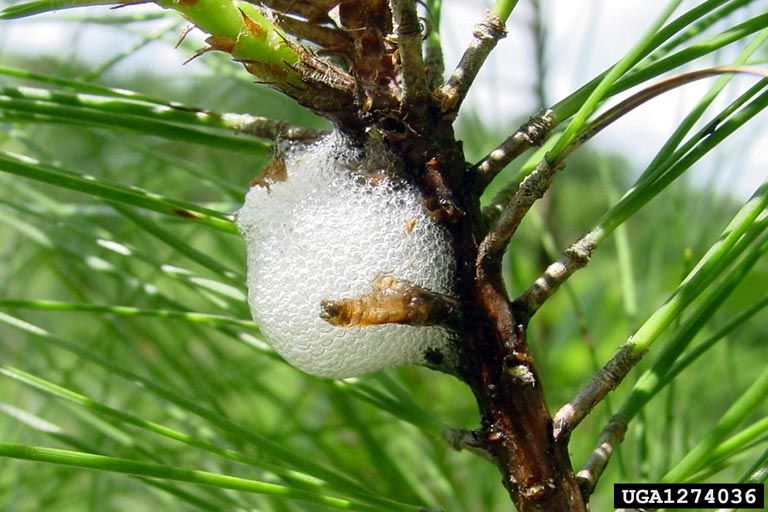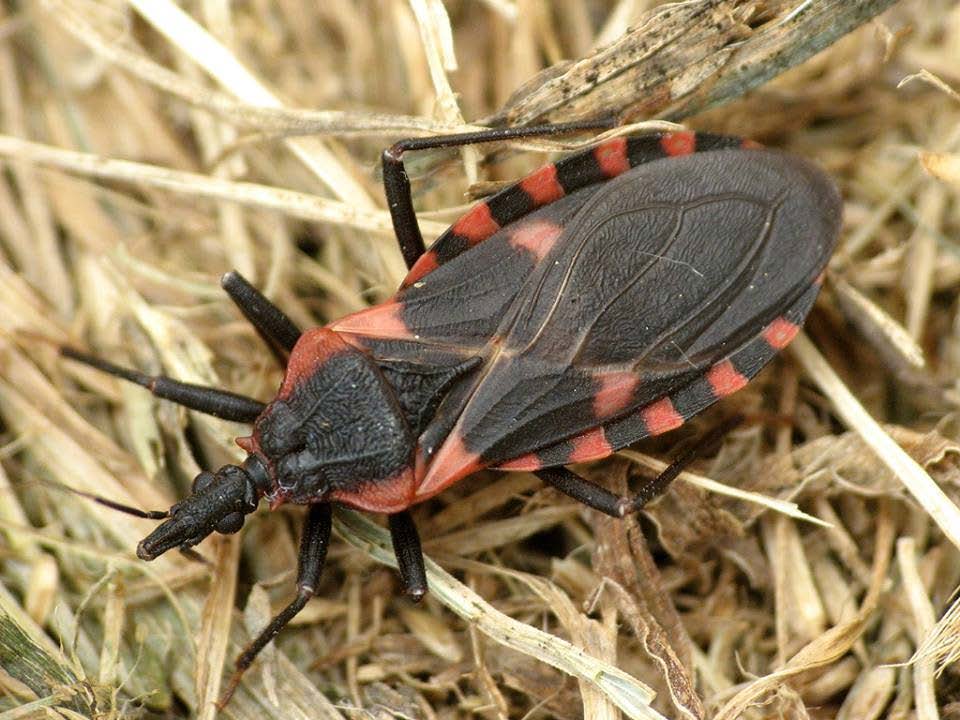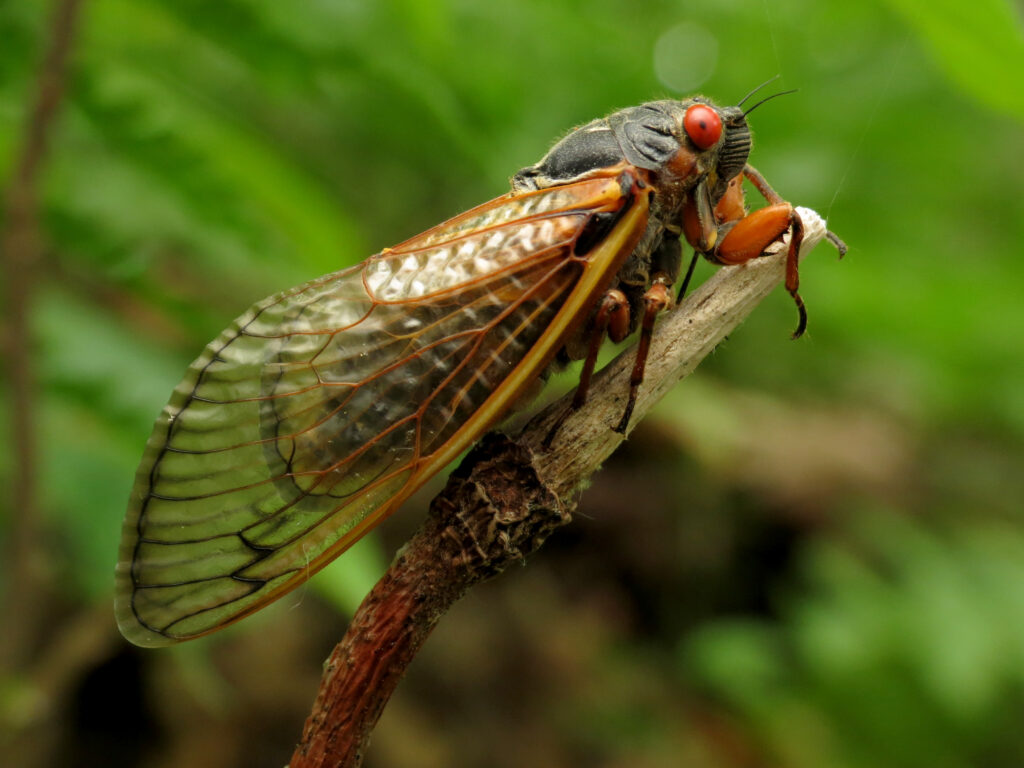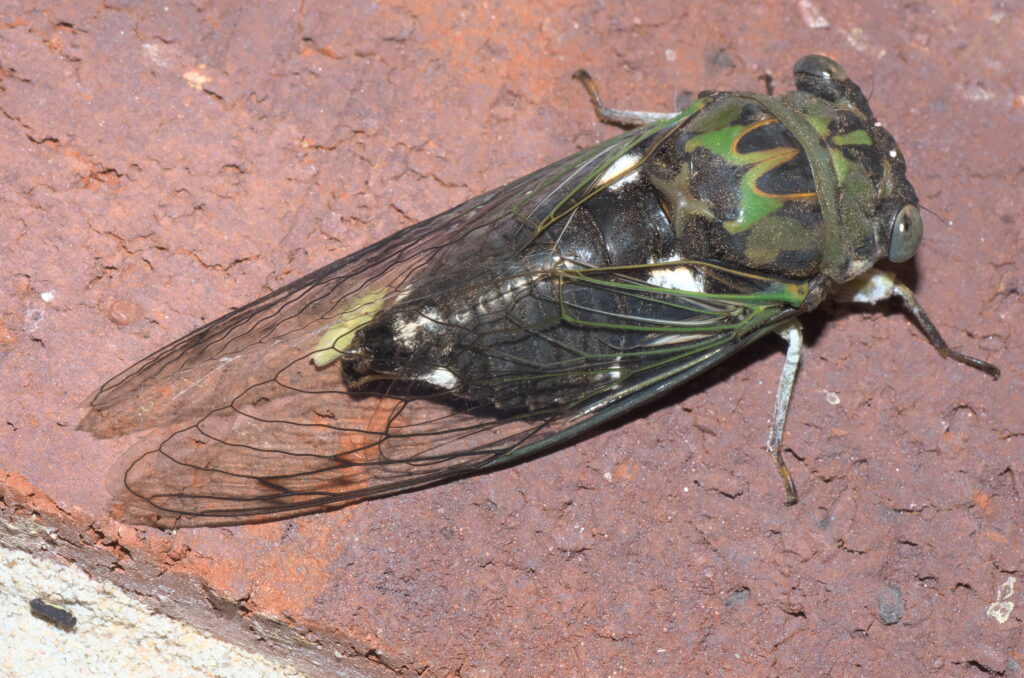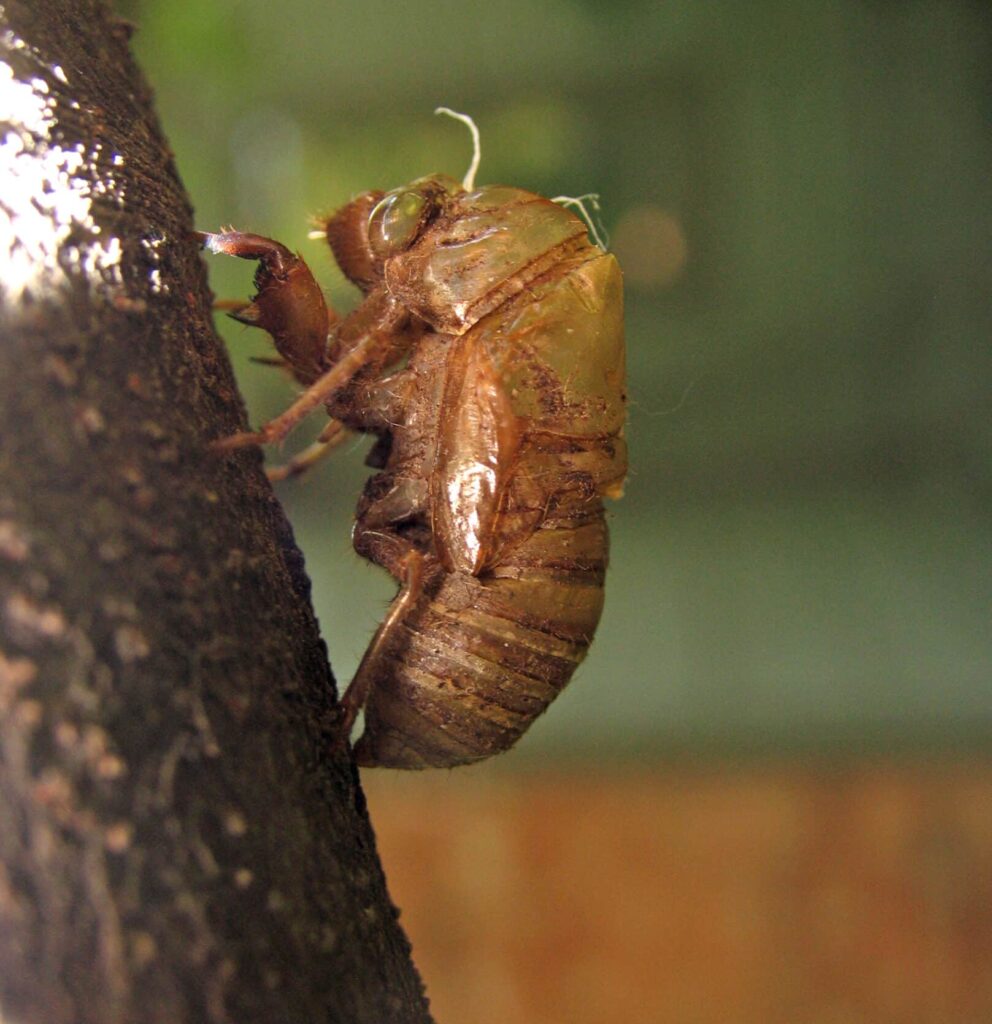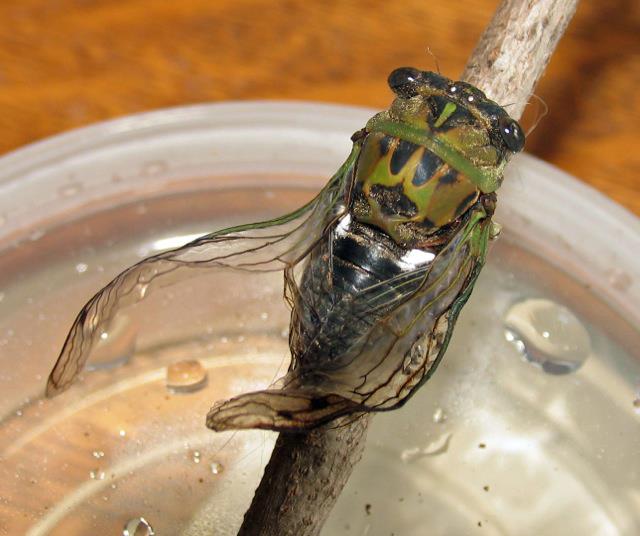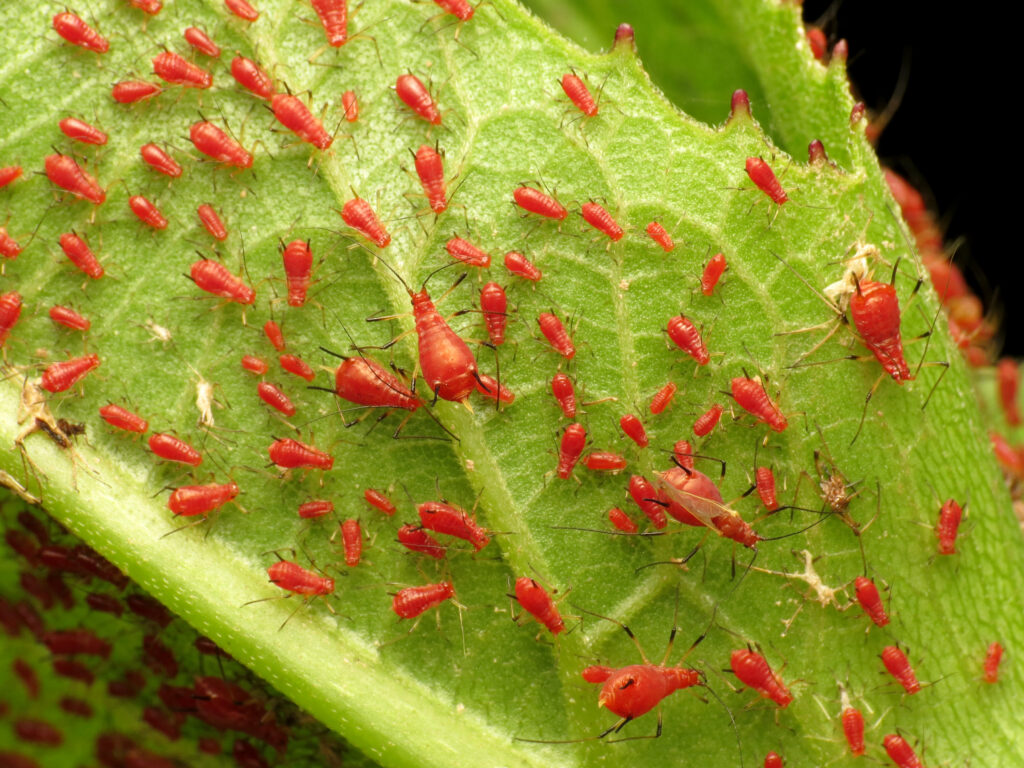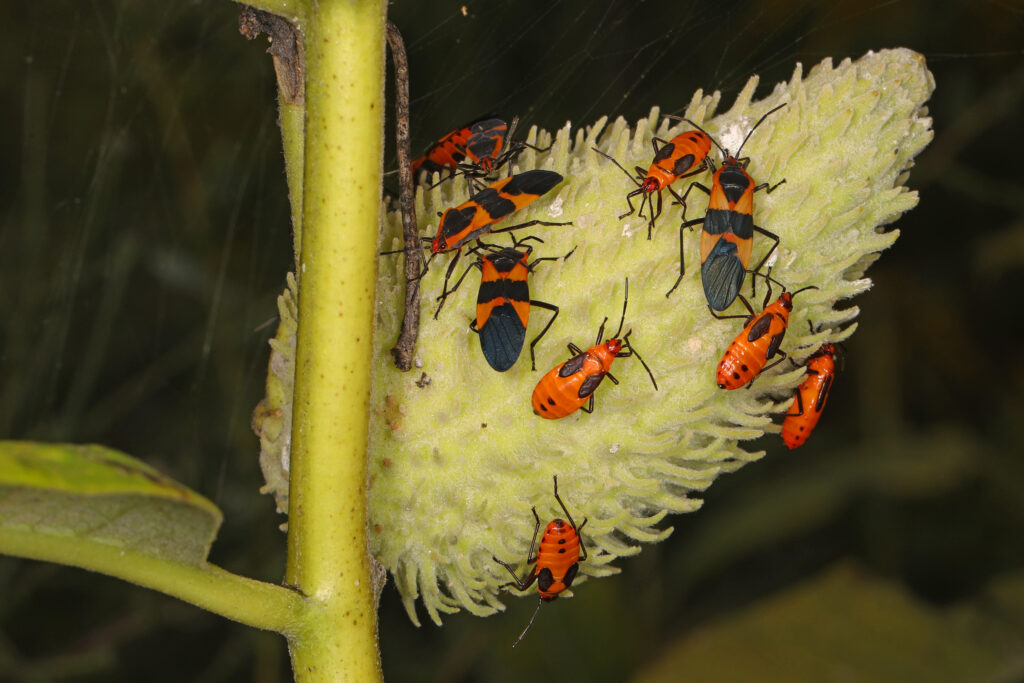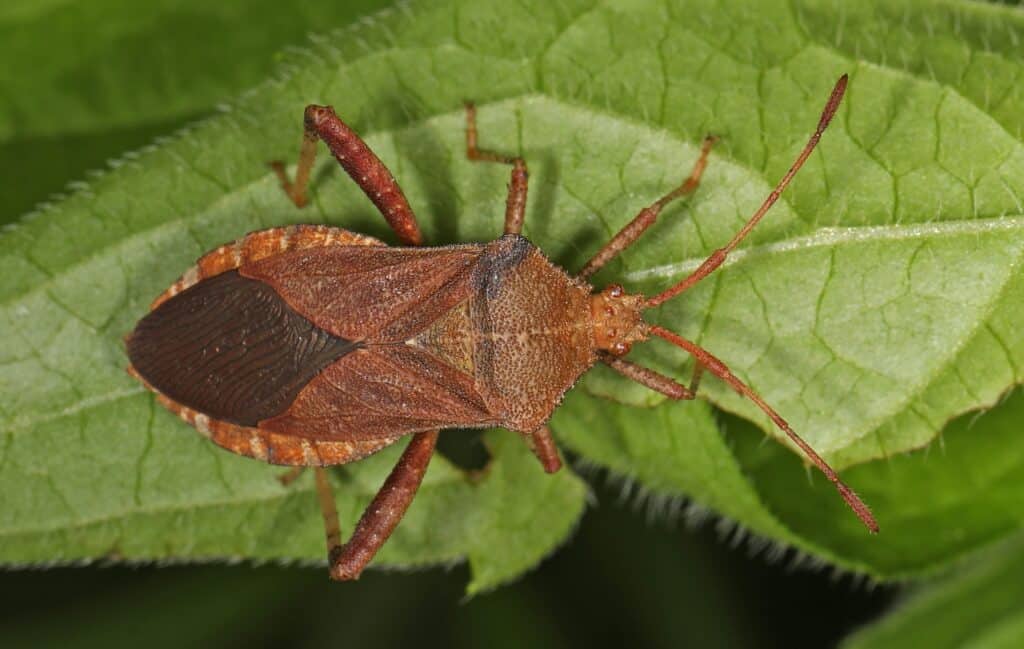Do any of these bugs look familiar to you? They’re referred to as true bugs. They’re insects in the order Hemiptera and the only group accurately called “bugs.” Look around on plants in your yard; you’ll probably spot some.
Green Stink Bug (Chinavia hilaris)
The Green Stink Bug is cleverly hidden in plants because of its green color. But look carefully; you might spot one, especially if it moves. It has needle-like mouthparts, which it uses to drink plant juices. Never fear; they don’t bite humans. However, if disturbed, they release a liquid that may cause an allergic reaction in some people. Look on the underside of leaves for their eggs. They inhabit the eastern half of the United States.
Boxelder Bug (Boisea trivittata)
Boxelder Bugs are insects belonging to a group called “true bugs.” People call almost any insect a “bug,” but from a taxonomic standpoint, only true bugs are correctly called that. They’re in the order Hemiptera (some experts place them in a suborder, Heteroptera). They’re around all summer but are noticed more in the fall for two reasons: In summer, they’re mostly hidden in vegetation, where they feed and mate. In the fall, they move off plants to look for overwintering spots (including tiny cracks and spaces around our homes, sometimes finding their way indoors.) They’re harmless to humans, plants, and property. Widespread across the eastern U.S. and southern Canada.
Froghoppers (suborder Auchenorrhyncha)
Froghoppers, colloquially called spittlebugs, are known for their ability to jump many times their height, startling more than one unsuspecting person! Adults feed on sap. So do their nymphs, which turn it into a froth that looks like saliva. You may have seen these mysterious foamy masses on your trees. Neither the adults nor their nymphs are dangerous. They’re found throughout the eastern half of the U.S.
Spittlebug nymphs hide from predators within the froth, and it also insulates them from temperature extremes and retains moisture so they don’t dry out and die. If you don’t want them on a plant, they can be washed off with water. You might find their froth on almost any kind of plant. They overwinter as eggs.
Eastern Bloodsucking Conenose (Triatoma sanguisuga)
The Eastern Bloodsucking Conenose is one of the “kissing bug” species. In the Triatominae subfamily, they’re called that because they come out at night and bite exposed flesh—with humans, that’s typically the face and lips of a sleeping person. In sensitive people, that can cause severe allergic reactions. Fortunately, humans are rarely bitten. There are ten native species in the U.S., some with bolder coloration than others. All are found in the southern half of the U.S. because of cold intolerance. Some species carry a parasite that causes Chagas disease, which can be deadly. They might be seen at night near lights, which they’re attracted to. There are similar-looking insects that are harmless.
Cicadas (superfamily Cicadoidea)
Periodical Cicadas differ from other cicadas in that they have amazingly long lives. Seven species have a 17-year life, and four have a 13-year life. All but a few weeks of their life are spent underground, sometimes as deep as 12 inches (30 cm), where they slowly mature while feeding on plant juices. In spring or early summer of the year they’ll emerge, when the soil temperature rises to just so, the cicadas do, too. And all of them at the same time. Because of their large size, cicadas are alarming, but they’re harmless.
Scissor(s) Grinder Cicadas are one of the “dog day” cicadas, a group so named because they reach their greatest abundance on summer’s hottest days. They’re called annual cicadas because some emerge every year, although individually, they spend two to three years underground as nymphs. When mature, they climb aboveground and shed their exoskeleton (or shell)—you’ve probably noticed these still clinging to a vertical surface long after the cicada has flown away. They range across most of the eastern U.S.
Above is the empty shell of a Scissor(s) Grinder Cicada, still clinging to the tree the insect climbed after digging out from the soil below.
The wings of this Scissor(s) Grinder Cicada aren’t blowing in the wind—they’ve met with disaster. When cicadas crawl out of their exoskeleton, their wings are wet, limp, and useless until inflated into proper shape and allowed to air dry. Something interfered with that process with this one. Its wings have dried into a shape that leaves it unable to fly away from predators and, therefore, defenseless. This can also happen to butterflies and other winged insects.
Aphids
Aphids are tiny bugs found on plants throughout the U.S. There are 1,350 species, and they may be green, black, red, yellow, brown, or gray. Depending on the species, they may or may not have wings. They’re unwelcome in the garden because they feed on plant juices. But lady beetles love them for food, and ants avidly drink the “honeydew” they produce, for its sweetness.
Large Milkweed Bug (Oncopeltus fasciatus)
Enjoy this bug for its beauty. Milkweeds are both a host plant and a food source for Large Milkweed Bugs, adults and juveniles alike. They feed on plant juices but are harmless to humans. The Large Milkweed Bug is found throughout North America.
Squash Bug (Anasa tristis)
These bugs are known for feeding on squash. But that’s not the only significance of their name. They also give out a foul odor if squashed. Sometimes called “stink bugs,” but true stink bugs are in a different true bug family. Squash Bugs have stabbing, piercing mouthparts and inflict a painful bite if handled. Otherwise, they’re harmless to humans. They’re found throughout the U.S.



